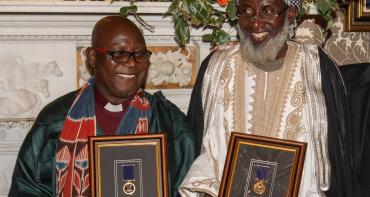Globally, the World Health Organisation estimates that one in three women experience either physical or sexual violence during their lifetime.

Why is an “economy-wide” approach necessary to measure violence against women and girls?
Globally, the World Health Organisation estimates that one in three women experience either physical or sexual violence during their lifetime. Violence against women and girls (VAWG) is not only a public health crisis and human rights violation, it also has a significant economic impact.
To help measure the economic cost of VAWG more accurately, the Commonwealth developed a methodology that went beyond the measurement of VAWG’s direct financial costs and applied an economy-wide modelling approach to estimate its overall economic impact.
The findings provide policymakers with a better understanding of the overall cost of VAWG, underscoring the importance of putting in place appropriate mechanisms to end it.
The Seychelles was the first country to apply the modelling approach with Commonwealth assistance. In June this year, its report revealed that the country was losing $65 million each year to VAWG. The Commonwealth is now planning further trials of the approach in other Commonwealth countries.
Why is it important to provide a wider understanding of the financial cost of VAWG?
Reducing VAWG requires resources, funding and new programmes. Sometimes, the government does not realise its extent, so we are trying to highlight the full cost of VAWG. When the cost is higher, there is a greater possibility that governments will intervene with resources to prevent such instances.
Reducing VAWG will contribute to better participation of women in the job market and increase overall economic activity.
Dr Bazlul - Ask the Expert
Can you explain the new economy-wide modelling approach that you are pioneering - how does it measure the economic cost of VAWG?
This methodology is drawn from previous studies done in countries like the UK, US and Canada. It has three aspects:
- It measures the cost of the services that victims of violence utilise, such as the health, justice and social service systems.
- It then measures the loss of personal income that victims of VAWG suffer when they cannot work.
- These two estimates are then included in a simple economic model to determine the total cost of VAWG across all sectors of the economy.
In the Seychelles, we conducted a costing on two levels for 2016. One was based on typical administrative data and the other used full coverage estimates based on population estimates. In the typical estimate, we determined that the cost of VAWG was 1.2 per cent of Gross Domestic Product (GDP), while the full coverage estimate showed the cost was 4.6 per of the GDP.
How is this methodology different from other existing ones?
We are using this methodology in countries where statistics are weak, particularly for VAWG. For the first time, we have applied economic modelling to the costing exercise of violence against women and girls. This approach has enabled us to capture important secondary data as well as linkage effects to assess the full economic impact of VAWG.
Given the Seychelles loses over $65 million dollars annually to VAWG, what recommendations have been proposed to the government in the report?
We have recommended that the issue of violence against women and girls should be included in the country’s development plans. Special resources from its budget should be earmarked to improve service delivery and data collection.
We also recommend the kind of community-based awareness programmes that are needed to stem VAWG be introduced in the country. Finally, there has to be continuous evaluation and monitoring of projects that the government will implement in order to reduce violence against women and girls.



